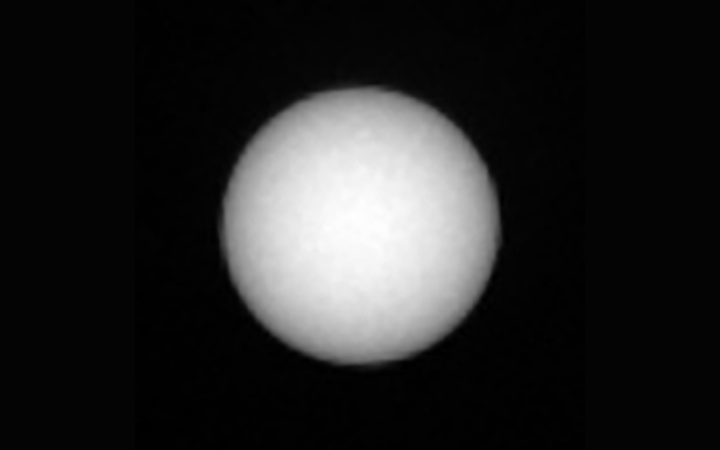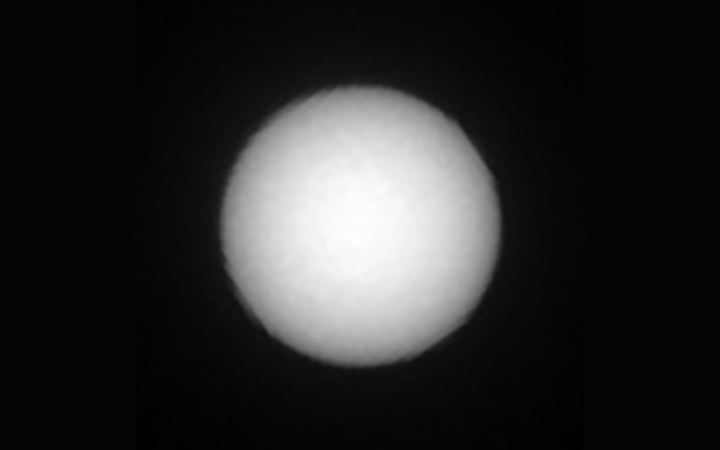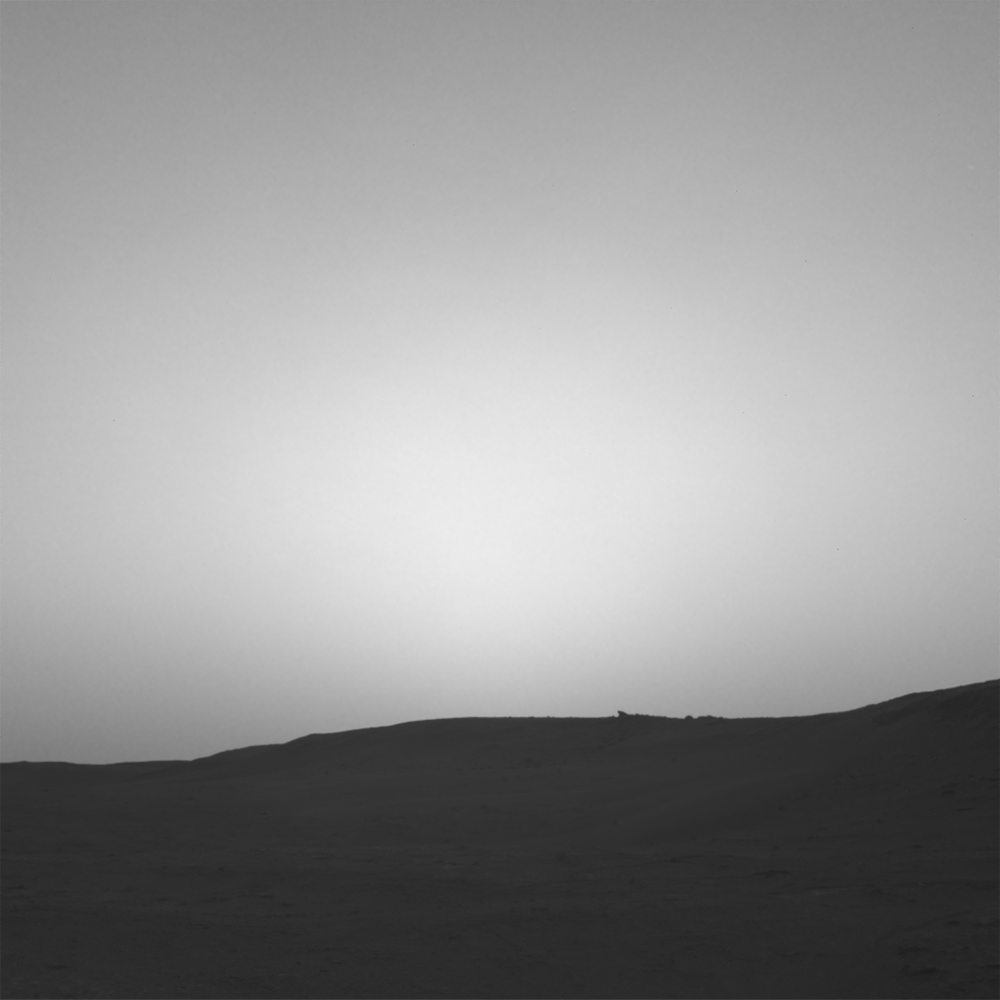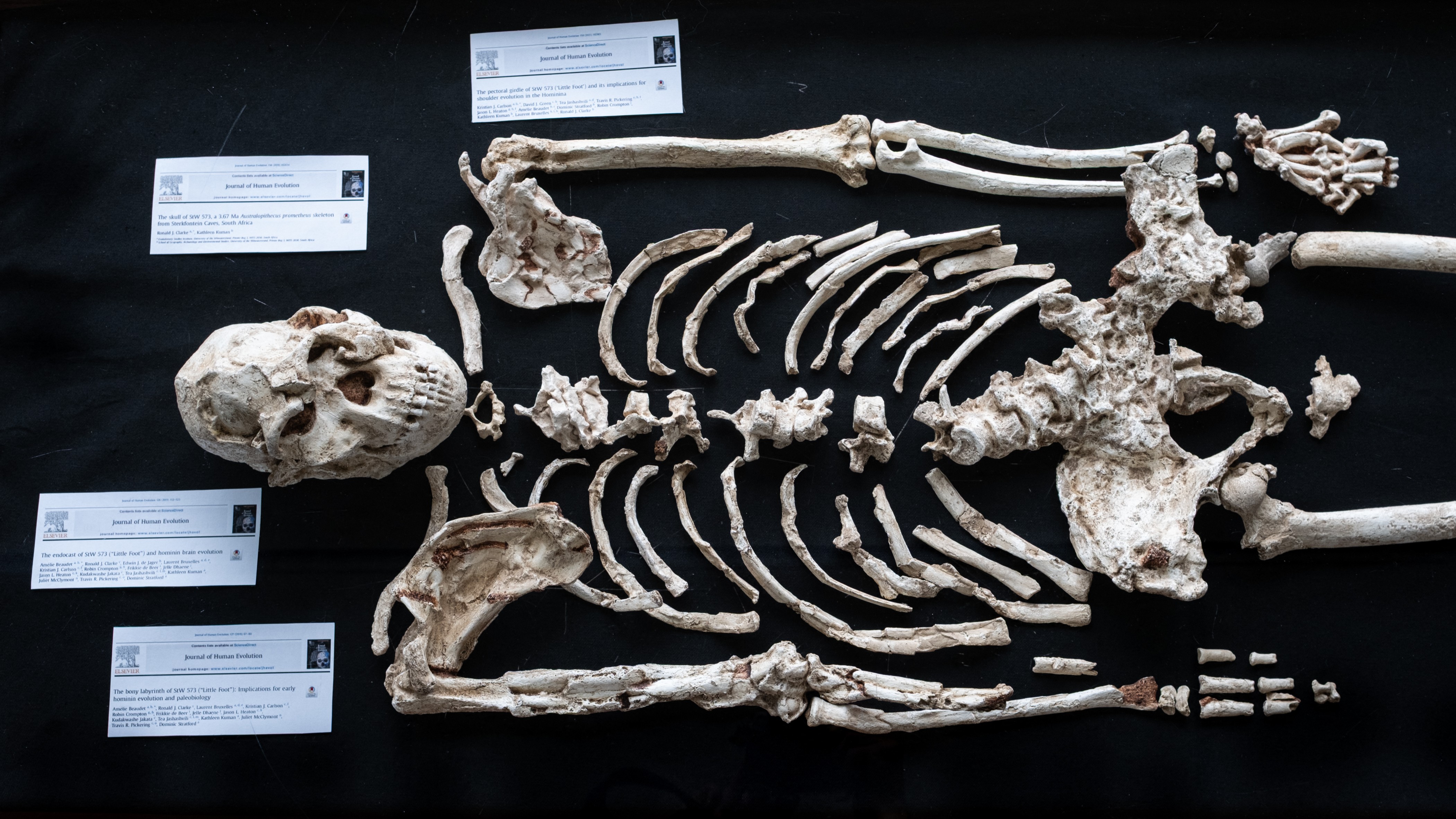Watch 3 Solar Eclipses on Mars, Captured by Curiosity

A solar eclipse on Earth is a spectacular sight, but what do eclipses look like on other worlds? Thanks to the Curiosity rover, we now have a front-row seat to recent solar eclipses on Mars performed by two of its moons.
Curiosity captured a series of images on March 17 showing the Martian moon Deimos crossing in front of the sun. Then, on March 25, Curiosity captured an indirect glimpse of an eclipse. The rover's view of the Martian horizon at sunset showed the sky suddenly darkening, as the bigger and closer moon Phobos swept overhead and temporarily dimmed the setting sun's light.
The next day, on March 26, Curiosity trained its eye skyward as Phobos passed directly in front of the sun. The images of Deimos and Phobos were captured by Curiosity's Mast Camera (Mastcam), which has a telephoto lens and solar filters that enable the camera to "look" directly at the sun; meanwhile, the horizon images were taken with Curiosity's Navigation Cameras (Navcam), NASA Jet Propulsion Laboratory (JPL) representatives said in a statement. [How to Make a Solar Eclipse Viewer (Photos)]
Phobos measures about 7 miles (11.5 kilometers) across and orbits Mars at a distance of around 5,827 miles (9,377 km). As this moon doesn't entirely block the sun, its passage is known as an annular eclipse, NASA-JPL reported. The eclipse lasted around 35 seconds, and the animation is sped up 10 times, according to the statement.
Deimos is both smaller and more distant from Mars than Phobos; the smaller moon measures about 1.5 miles (2.3 km) across and is approximately 14,562 miles (23,436 km) from Mars. In fact, Deimos is so small that its passage across the sun doesn't quite qualify as an eclipse and is instead called a transit, NASA-JPL reported. Deimos' transit took several minutes to finish and was also sped up 10 times in the animation.
When Curiosity captured images of the darkening Mars horizon, the sun had descended below the horizon just as Phobos was rising, so the moon cast its elongated shadow over the ground, NASA-JPL wrote in a statement.
Phobos and Deimos ("fear" and "panic" in ancient Greek, respectively) were named for two terrifying horses in Greek mythology that pulled the chariot of Ares, the god of war and the Greek counterpart of the Roman war god, Mars, according to NASA.
Get the world’s most fascinating discoveries delivered straight to your inbox.
Earth's moon is thought to have formed from debris after a massive object collided with Earth about 4.5 billion years ago. Phobos and Deimos, however, are likely asteroids that were captured from the outer asteroid belt by Mars' gravitational pull.
- Photos: The Adventure Behind Eclipse Chasing
- Photos: Super Blood Wolf Moon Eclipse Stuns Viewers
- Totally Active: Eclipse Photos Reveal Sunspots, Solar Flares
Originally published on Live Science.

Mindy Weisberger is a science journalist and author of "Rise of the Zombie Bugs: The Surprising Science of Parasitic Mind-Control" (Hopkins Press). She formerly edited for Scholastic and was a channel editor and senior writer for Live Science. She has reported on general science, covering climate change, paleontology, biology and space. Mindy studied film at Columbia University; prior to LS, she produced, wrote and directed media for the American Museum of Natural History in NYC. Her videos about dinosaurs, astrophysics, biodiversity and evolution appear in museums and science centers worldwide, earning awards such as the CINE Golden Eagle and the Communicator Award of Excellence. Her writing has also appeared in Scientific American, The Washington Post, How It Works Magazine and CNN.




